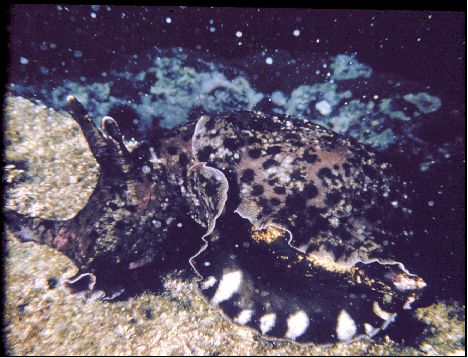

| Postdoctoral Fellow, Biology, California Institute of Technology, 1972 | Ph.D., Biology, The University of Chicago, 1970 |
| A.B., Biological Sciences, Stanford University, 1964 |
| 2002- | Panelist, NSF Graduate Research Fellowship Program | 1999-2000 | Visiting Professor of Neurobiology, Max Planck Institute for Biophysical Chemistry, Göttingen, Germany | 1998- | Professor, Graduate Neuroscience Program, Oregon Health and Sciences University | 1996-1998 | Chair, Committee of Examiners, GRE, Educational Testing Service | 1995- | L.N. Ruben Professor of Biology | 1995-1999 | Scientific Review Panel, Oregon Health Sciences Foundation | 1994-1996 | Chairman, Biology Department, Reed College |
| 1992-1993 | Visiting Senior Scientist, Vollum Institute for Advanced Biomedical Research, Oregon Health and Sciences University | |
| 1983- | Professor of Biology, Reed College | |
| 1982-1986 | Member, Neurology B Study Section, National Institutes of Health | |
| 1979-1981 | Chairman, Gordon Research Conference on Neural Plasticity | |
| 1977-1978 | Member, Neurological Sciences Study Section, National Institutes of Health |
| 2002- | Co-PI, DARPA Grant for Interdisciplinary Study of Epidemiology | |
| 1999-2000 | Levine Sabbatical Leave Award, Reed College | |
| 1991-2000 | Project Director, Howard Hughes Medical Institute Undergraduate Biological Sciences Education Initiative Grant, Reed College | |
| 1992-1993 | Howard Vollum Senior Sabbatical Award, Reed College | |
| 1989 | Burlington Northern Faculty Achievement Award, Reed College | |
| 1984-1985 | PI, Intel Corp. Grant for Advanced Computing Resources, Reed College | |
| 1982-1983 | Co-PI, Medical Research Foundation of Oregon Grant for Studies of Neuropeptide Genes, Reed College | |
| 1980-1981 | Co-PI, National Science Foundation Grant for Computer Resources, Reed College | |
| 1979-1982 | Co-PI, National Institutes of Health Grant (NS 15867) for Study of the Ultrastructure of Secretion, Reed College | |
| 1977-1978 | PI, Medical Research Foundation of Oregon Grant for Biochemistry of Neuropeptide Synthesis, Reed College | |
| 1974-1991 | PI, National Institutes of Health Grant (NS 11149) for Study of the Regulatory Physiology and Biochemistry of Peptidergic Neurons | |
| 1973-1975 | Research Fellowship in Neurobiology, Alfred P. Sloan Foundation, Reed College | |
| 1970-1972 | Postdoctoral Fellowship, National Institutes of Health (NIGMS), California Institute of Technology | |
| 1969 | Teaching Fellowship, Danforth Foundation, The University of Chicago |
[I have been invited to present over forty lectures at universities and research institutes in the United States, Europe, Africa, and the Peoples' Republic of China. My associates and I have submitted approximately 50 abstracts for presentation at local, national, and international conferences. The following lists a selection of publications illustrating my research interests.]
Arch, S. (1972). Biosynthesis of the egg-laying hormone (ELH) in the bag cell neurons of Aplysia californica. J. Gen. Physiol. 60:102-119.
Arch, S., T. Smock, and P. Earley (1976). Precursor and product processing in the bag cell neurons of Aplysia californica. J. Gen. Physiol. 68:211-225.
Arch, S. and T. Smock (1977). Egg-laying behavior in Aplysia californica. Behav. Biol. 19:45-54.
Branton, W., S. Arch, T. Smock, and E. Mayeri (1978). Evidence for mediation of a neuronal interaction by a behaviorally active peptide. Proc. Natl. Acad. Sci. 75:5732-5736.
Berry, R. and S. Arch (1981). Activation of neurosecretory cells enhances their synthesis of secretory protein. Brain Res. 215:115-123.
Arch, S. (1986). Secretory queuing in a peptidergic neuron. In Proceedings of the Eighth International Symposium on Comparative Endocrinology, Edited by B. Lofts, Univ. of Hong Kong Press, Hong Kong.
Arch, S., A. Linstedt, G. Whitney, P. Teal, and T. Smock (1986). Neuropeptide routing in the bag cells: Kinetic differences in the appearance of newly labeled peptides in transport and secretion. J. Neurosci. 6:1545-1552.
Molloy, S., C. Bruns, and S. Arch (1987). Dissimilar associations of two secretory peptides with a neurosecretory granule-enriched fraction from the bag cells. Peptides 8:829-836.
Crandall, R., M. McClellan, S. Arch, J. Doenias, and R. Riper (1987). Inverse diffusion methods for data peak separation. Analyt. Biochem. 167:15-22.
Arch, S. and R. Berry (1989). Molecular and cellular regulation of neuropeptide expression: The bag cell model system. Brain Res. Rev. 14:181-201.
Arch, S. (1998). Aplysia. In Encyclopedia of Reproduction, Vol. 1, E. Knobil and J. D. Neill, Editors-in-Chief, pp. 255-260. Academic Press, San Diego.
Thea Doidge (2004) Vesicle recycling at the axon terminals in neuroendocrine cells of Aplysia californica.
Michael Hoppa (2004) Secretory vesicle structure.
Cecilia Phillips (2003) Processing of GFP-tagged ELH prohormone in PC12 cells.
Shannon Stark (2003) Aplysia california bag cells transfected with GFP-tagged pro-egg-laying hormone.
Jennifer Cameron (2002) Endocytic recovery of secretory vesicles in cultured bag cells.
Melissa Herman (2002) Sorting mechanisms of a regulated secretory protein visualized by molecular modification.
281 Exercise Physiology: Introductory examination and discussion of metabolic (nutritional), muscular, cardiovascular, pulmonary, and sensorimotor aspects of human physiology. Particular attention is directed toward the requirements for and responses to vigorous physical exercise. Popular notions of nutrition and exercise are critically evaluated.
381 Animal Physiology: An intensive treatment of the cellular biochemistry and biophysics that result in the organization and integrative function of signaling pathways and the organisms that they regulate. Endocrine and neuronal regulatory interactions receive equivalent attention. Emphasis is placed on contemporary research examples and spans a wide phylogenetic range.
431 Membrane-Membrane Interactions: Consideration of the latest research on the cellular and molecular biology of the eukaryotic secretory pathway and exocytosis. How do proteins and lipids destined for the cell surface, and beyond, get there?

Maintained by the Reed College Biology Department
Last Modified 07/15/04
Questions/Comments to sarch@reed.edu